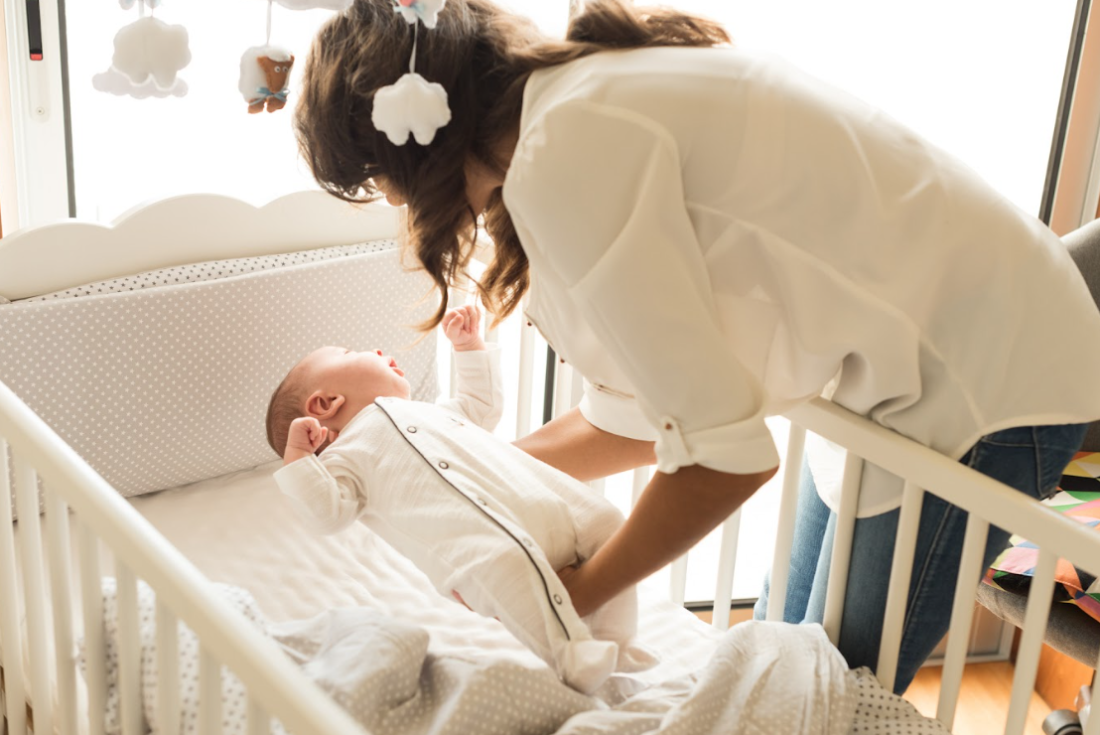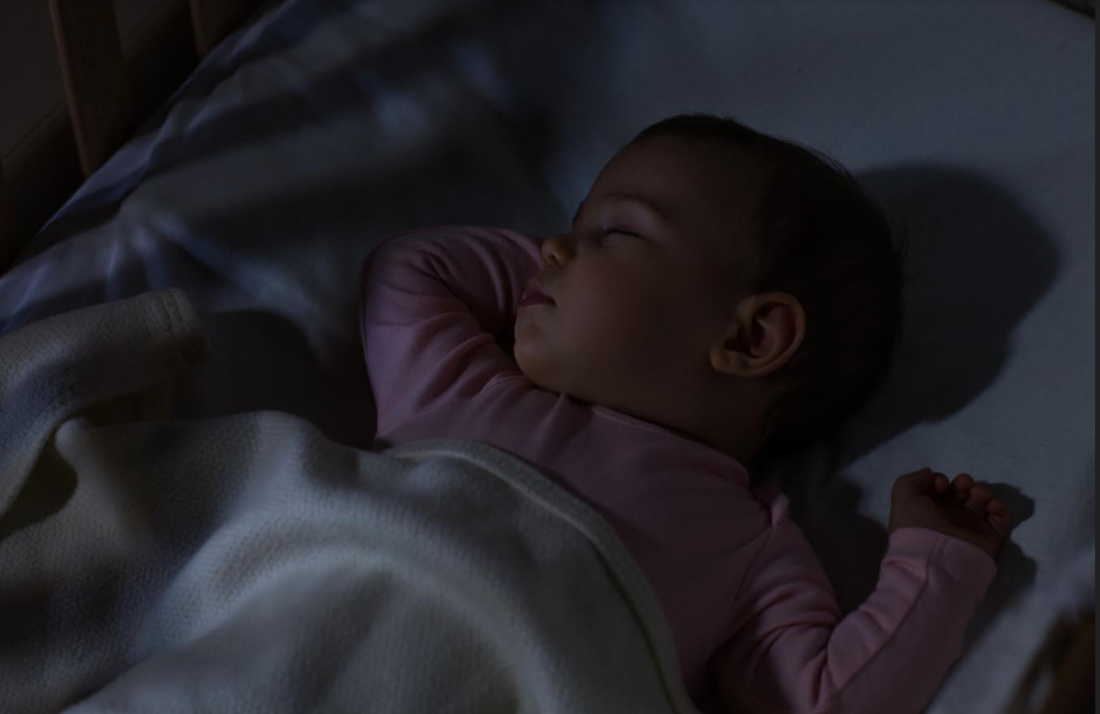The promise of a whole night’s sleep can feel like a distant dream for sleep-deprived parents of a newborn. Yet, with some essential tools for creating a soothing, sleep-inducing environment, peaceful sleep for your baby is within reach. This article will guide you in setting up the ideal nursery for your little one by recommending must-have items for safety and comfort.

Essential Must-Haves
Babies need varying amounts of sleep depending on their age. Newborns usually require up to 17 hours a day, including naps. Meanwhile, older infants generally need 12 to 16 hours of sleep within a 24-hour period. A safe and comfortable nursery should have a few essential items to ensure your baby gets enough quiet and restful sleep. Here are the must-haves you need to gather:
Sleep Environment
- White Noise Machine
A high-quality sleep training soother, which provides ambient background noise, can be a lifesaver for inducing slumber. The continuous, soothing sounds mask sudden noises that can startle your baby awake. Choose a model with adjustable volume control and various sound options like white noise, rain, lullabies, or recording capabilities to record your soothing voice.
- Crib or Bassinet
A clean, safety-approved crib or bassinet ensures your baby has their own designated sleep space. Look for durable construction with a snug-fitting mattress made from firm, supportive materials. Use fitted sheets and eliminate all loose bedding, pillows, and soft toys from the crib to minimize the risk of SIDS.
- Blackout Curtains or Sleep Shades
Blocking out light signals the brain to release melatonin for sleep, which helps your baby sleep better by mimicking the darkness of the night. Install room-darkening window shades or blackout curtains to dim ambient nighttime or early morning light that can disrupt sleep cycles. Opt for curtains with thermal insulation to further muffle outdoor sounds.

- Room Thermometer
Babies sleep best at temperatures between 68-72°F (20-22°C). Maintain this ideal temperature with a thermometer and dress your baby in breathable layers to avoid overheating. Adjust clothing layers as needed to prevent sweating or shivering.
Soothing and Comfort
- Swaddles or Sleep Sacks
Swaddling with a lightweight blanket or sleep sack gives a snug feel that soothes and contains startle reflexes to support sleep. Once your baby starts showing signs of rolling over, it’s time to switch to a sleep sack for safety. Check in the nursery often once your baby becomes mobile in the crib.
- Pacifiers
Sucking motions can be very calming, and pacifiers are beneficial for lulling to sleep. But don’t force it if your baby refuses one. Offer it again at a later age if desired, being mindful of dental development impacts with long-term usage exceeding 12 months.
- Comfort Items
Have a special soft blanket or stuffed animal for sleep associations and self-soothing. Introduce a ‘lovey’ around 12 months old for comfort and security during transitions. A washable companion could withstand many snuggles.
- Baby Monitor
Video and audio monitors offer extra peace of mind and alert you when your little one stirs. Choose a reliable signal range and convenient features like a room temperature display or lullaby playback. Portable monitors also let you listen to your baby throughout the house.
Establishing Routines
- Calming Bath Products
Incorporate gentle baby wash products and lotions into a warm, relaxing bath to signal winding down for sleep. Lightly massage while chatting or singing to make bath time soothing. Keep towels and washcloths soft and blankets nearby for wrapping afterward.
- Storytime Books
Reading bedtime stories promotes relaxation while strengthening language development and parent-child bonding. Choose engaging board books to capture attention before the lights go out. If your baby’s eyes grow heavy, continue the tale with your voice at a soft volume until the little one is fast asleep.
- Lullabies and Calming Music
The right music can soothe a fussy baby to sleep effectively. Explore different sounds, from soft instrumentals to womb recordings, to find the most effective genre for your infant. You may be surprised what melody finally does the trick!
- Nightlight
While darkness signals sleep, a low-level nightlight allows for middle-of-the-night checks and feedings without overstimulation. The soft glow prevents startles but won’t inhibit melatonin release. Position the nightlight low to the ground to keep it from shining directly in your baby’s eyes.
Additional Tips and Considerations
While each baby’s sleep needs are unique, gentle sleep training methods can establish healthy sleep patterns early on without causing undue distress. Be patient and consistent with gradual approaches. Seek pediatrician guidance if experiencing separation anxiety, sleep regressions, teething, or other disruptions persisting beyond a few days.
Creating positive sleep associations through consistent bedtime routines is vital. Help your baby wind down by following the same sequence nightly—whether it’s a bath, bedtime stories, or lullabies—to signal rest ahead. Expect some fussy nights while adjusting and embrace the small wins each good night’s sleep brings.
Safety must be the top priority in your baby’s nursery. Always place them on their back on a firm surface without surrounding blankets, position the crib away from hazards, and check on your sleeping baby frequently. With thoughtful preparation for comfort and security, your little one will soon snooze soundly from bedtime until dawn.
Conclusion
A whole night’s sleep may require creativity, patience, and the right tools in those early months. This guide outlined the essential items to create an environment conducive to peaceful slumber, from comfy cribs to sound machines, based on safety, soothing, and consistency. Now, you can build a foundation for bedtime bliss and enjoy the immense relief of sweet dreams with your little dreamer.



